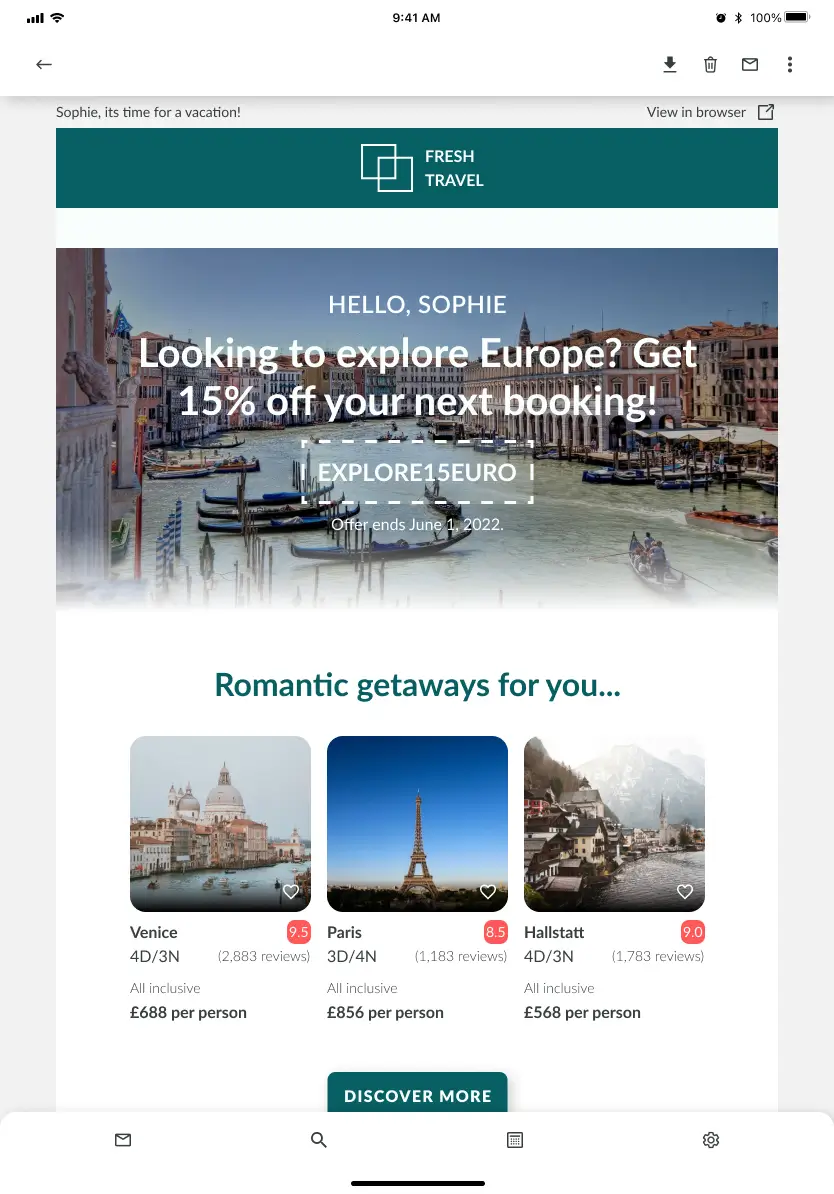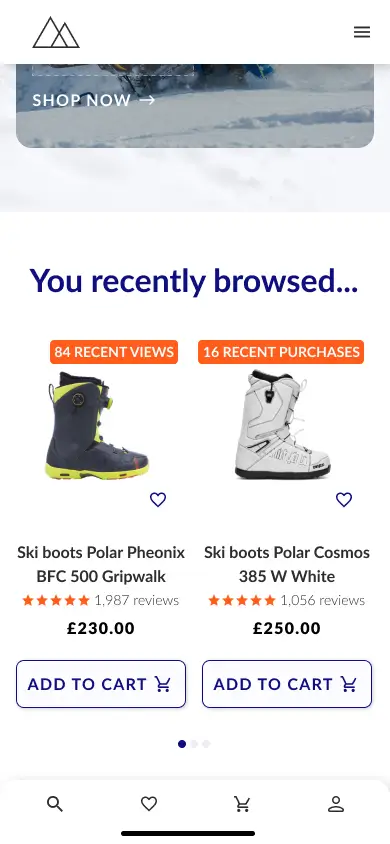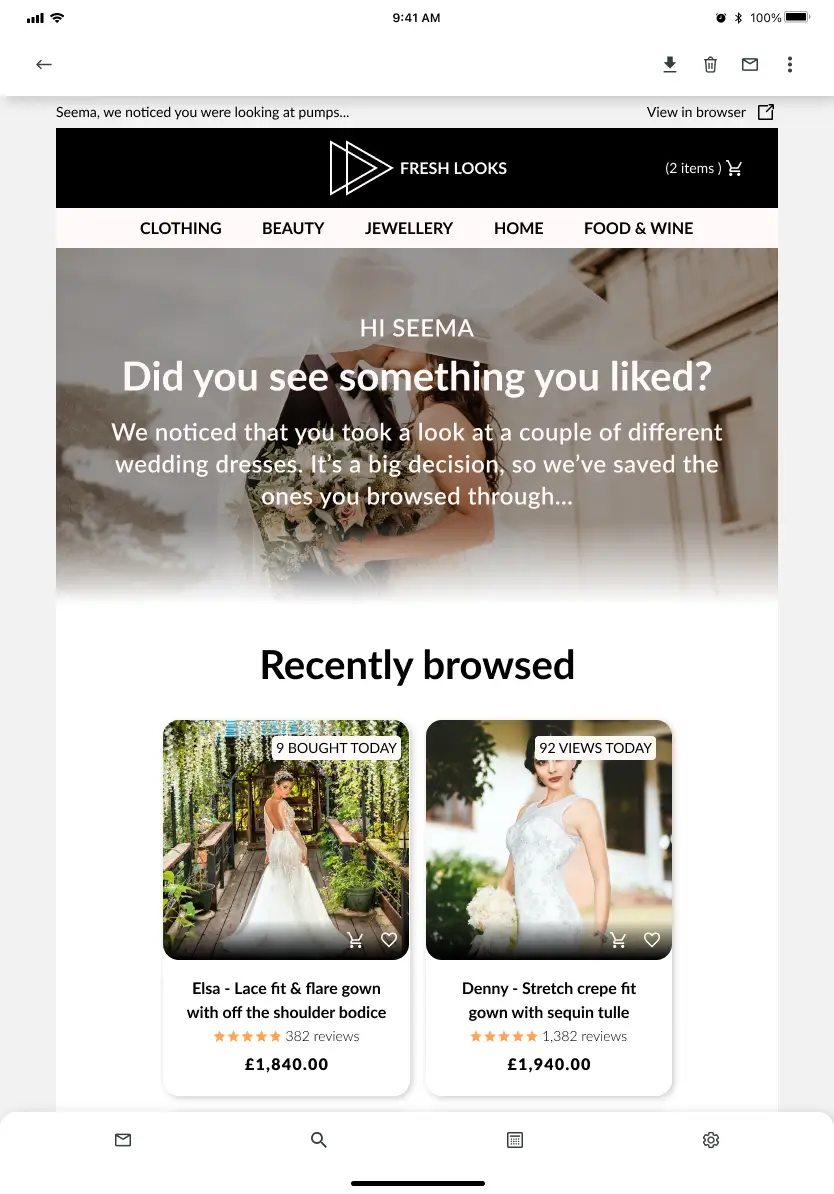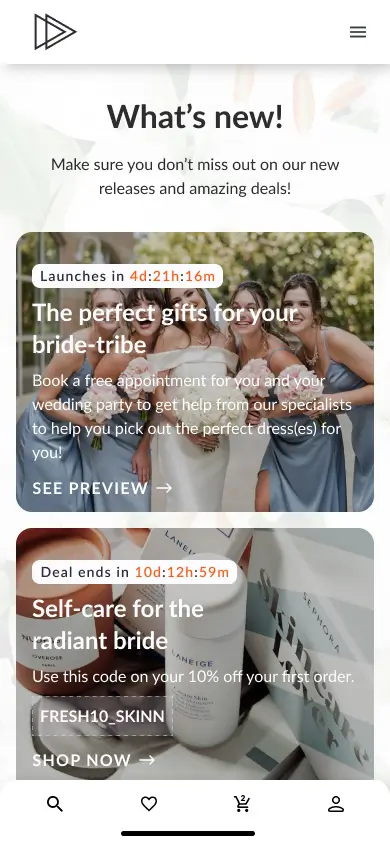With today’s technology, there are a myriad of channels you can use to engage with your customers. If you stick to just email and your website for your marketing strategies, you are missing out on a lot of potential revenue. After all, over half of consumers (63%) interact with at least 2 channels before making a purchase. But sending inconsistent messages on multiple channels also doesn’t work. So how do you optimize the customer experience to make it as seamless and tailored as possible whilst using cross-channel marketing, without feeling like pulling your hair out?
Read on to find out how.
Step 1: Collecting data
It is important to collect enough data across all your channels to find out who your customers are, what they need, what stage of the buying cycle they are in and how they are interacting with your brand. In this way, you can create more accurate personas and therefore personalize and optimize your marketing strategies, and it will help you focus on the marketing channels that aid you in reaching your goals. It also means that you can create personalized content for your customers.
The Fresh Relevance approach
As a platform, we are able to collect data from all your channels, whether it’s from your app, website, emails, etc. We then store it all in one place, making it easy to segment customers and making it accessible for all your marketing campaigns. This way, you can break down silos between teams whilst sharing knowledge and you can work more efficiently.
Now that you’ve gathered your data, see below how you can use it to optimize your customer experience.
Step 2: Using cross-channel coupons
A coupon can be one of the best incentives to buy a product, and by showing the same personalized coupon to a customer across channels, they will be more likely to make a purchase. Customers want a seamless experience from channel to channel, so if they click on a coupon and get taken to a website or app that shows no hint of how to use the coupon or how to claim that discount, they will potentially bounce. In fact, 25% of customers get frustrated when they receive a coupon code but can’t find a way to use the coupon on the site.



Different types of coupon
Each coupon can be personalized depending on the behavior of a customer and what stage of the buyer’s cycle they are in. A new visitor on your website might see a popover in which they are encouraged to give their email address in exchange for a newcomer’s discount, whilst a lapsed customer might receive a triggered email with a different discount encouraging them to come back and make another purchase. Loyal customers using your app may see a token of your appreciation.
Learn more about engaging shoppers throughout the buyer’s cycle with this checklist.
Step 3: Cross-channel product recommendations
Product recommendations, when used right, can be a great way to get customers to make a purchase. Once you have data on the browsing and purchase history of a specific customer, you can start personalizing recommendations for them. For example, you can show them brands they often purchase, products in the colors they often browse, or products in the price range they tend to buy. Make sure you don’t recommend products to them they’ve already purchased, though, as that is a frustration to 21% of customers.
Of course, it is important to use these recommendations on your website, but they can become even more effective when you also use them across your channels. For example, you can promote products in your customer’s favorite categories in email campaigns such as browse and cart abandonment, to not only encourage them to finish a purchase but to also increase order value.



You can also use the same product recommendations displayed on your website in your post-purchase emails. This will help you to nurture that bond between you and your customers, and, once again, increase order value.
Make sure that clicking on one of the products in your emails will immediately take the customer to the product page, and that the recommendations they see in their emails are in line with the recommendations they see when they open your website.
Another channel you can use to recommend products is your app. Whether it’s native or web/PWA, both can make use of Fresh Relevance’s rules, helping you personalize recommendations to your customers in the same way you can do for a website or email. When using Fresh Relevance, the customer experience is seamless, as the product recommendations are consistent with those on your other channels.
Step 4: Cross-channel cart widget
If a customer has left your website without checking out the item in their cart, it is important not to miss the chance to help customers return to it and make those purchases. After all, we have recently seen a 8% sales uplift on average for clients using just cart recovery campaigns.
However, just having a cart recovery campaign in place is not enough. Almost 1 in 4 consumers (and almost 1 in 3 Gen Z consumers) are more likely to shop with a retailer when they can view the contents of their online shopping cart across multiple channels, such as the website and app. This means that the emails you send must work well with your website. In other words, your customer should be able to recover everything they left in their cart via all purchase channels.



Step 5: Cross-channel social media
Depending on your target customers, social media is likely to be an important channel to engage with. It’s crucial to show relevant advertising on these channels to new customers – and to make sure that they link back to the relevant pages, smoothing out that buying experience for customers. Any coupons or recommendations clicked on should link them back to a page with the same information.
Another clever way to increase revenue is to use user-generated content (UGC). This form of social proof allows you to show social media feeds or hashtags on your website and in your email. One in three shoppers prefer to see a product as it is worn or used by real people as opposed to professional product images, so by promoting the images posted by your customers, you are leveraging that ‘wisdom of the crowd’.
You can use social media feeds and social proof within your app as well. Not only that, you can also combine tactics, such as showing product recommendations with urgency messaging by displaying how many people have already bought or looked at a certain product or service in the last hour. You can ask for and display reviews in the app as well.
Step 6: Testing and optimizing
Now that you’ve got your cross-channel marketing in place, you’ll need to optimize your strategies – it’s time to start testing.
A/B tests are an effective way to test your marketing campaigns. This will allow you to see which of your strategies works best, and will aid you with future campaigns. It’s important to continuously go back to your data and check everything is still on track, and to use multiple KPIs to make sure you aren’t missing any important information which could help you. Whether you’re looking at website, email or app, with Fresh Relevance you can use our Automatic Optimization feature, meaning you can test multiple variations of dynamic content, product recommendations, social proof tactics, and so on, against others, with fast, automated results. This means that, once the system knows which variation works best, it will automatically use that version.
We can help
Are you ready to use cross-channel marketing and personalization? Good news: we can help you get there. Book a demo with us today to learn more.
Discover where to start with personalization, which tactics to deploy and which channels to use with the Fresh Relevance Personalization Framework, designed to help you target your key customer segments with content that will move them along the funnel and boost conversions.





